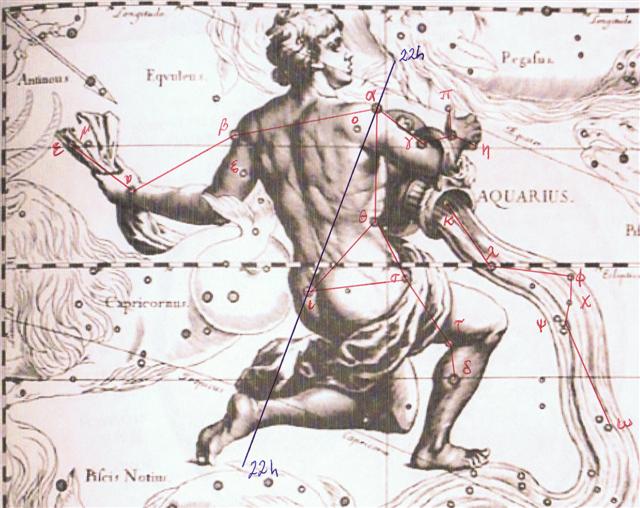There are 29 glyphs in line Ca14, but I will save the last 12 of them until line Cb1.
Beoynd February 29 the difference between the Gregorian day numbers and the manzil day numbers changes from 136 to 137. In a non-leap-year the manzil Saad Al Saud in also ending in March 23, but then this day would correspond to day 82 from January 1. In a leap year the manzil π day (314) will not correspond to Gregorian day 314 + 136 = 450 but to day 314 + 137 = 451 (March 26):
In an ordinary 365-day long year April 4 would have coincided with Saad Al Akhbia 13 (324):
... γ [Aquarii], 4.1, greenish, on the right arm at the inner edge of the Urn, and the westernmost star in the Y, is Sadachbia, from Al Sa'd al Ahbiyah, which has been interpreted the Lucky Star of Hidden Things or Hiding-places, because when it emerged from the sun's rays all hidden worms and reptiles, buried during the preceding cold, creep out of their holes! But as this word Ah Biyah is merely the plural of Hibā', a Tent, a more reasonable explanation is that the star was so called from its rising in the spring twilight, when, after the winter's want and suffering, the nomads' tents were raised on the freshening pastures, and the pleasent weather set in. This idea renders Professor Whitney's 'Felicity of Tents' a happy translation of the original ...
| ||||||||||||||||||||||||||||||||||||||||||||||||||||||||||||||||||||||||||||||||||||||||||||||||||||||||||||||||||||||||||||||||





